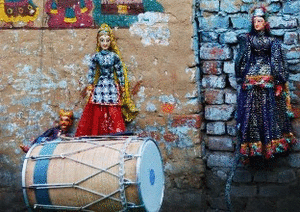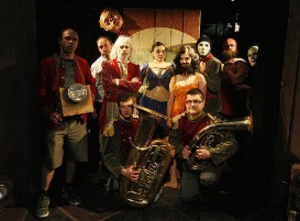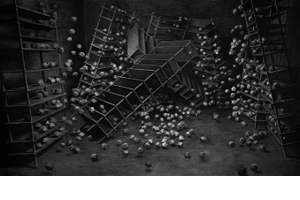We publish this information appeared in The Hindu and which has been sent by Dadi Pudumjee, founder of the The Ishara Puppet Theatre Trust and President of Unima, on the latest developments concerning the Kathputli Colony of Dheli, India. As we can read on Wikipedia, “Kathputli Colony is a colony of street performers in Shadipur Depot area of Delhi. For the last 50 years, it is home to some 2,800 families of magicians, snake charmers, acrobats, singers, dancers, actors, traditional Especially healers and musicians and puppeteers or Kathputli-performers from Rajasthan. This makes it world’s largest community of street performers. ”
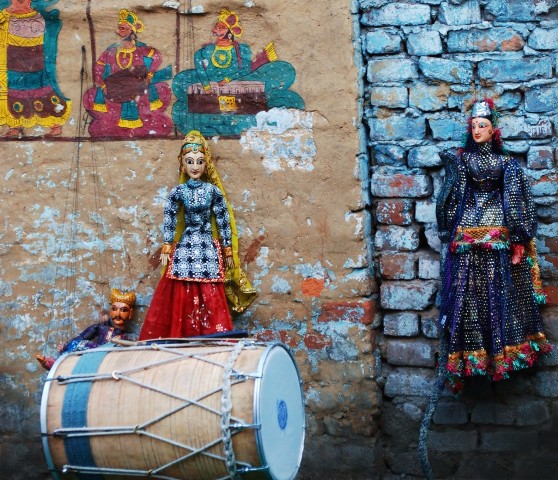
Puppets in Kathputli Colony. Foto by Martin Travers.
We reproduce below part of the article “Futur Tense” sent by Dadi Pudumjee and published by The Hindu, written by Harsh Snehanshu, a reclusive writer, a TEDx speaker and a solo pan-India traveller. Bestselling author of the Kanav-Tanya trilogy and BSH: www.bit.ly/harshsnehanshu:
“The residents of Kathputli Colony in West Delhi, performers all, wage a battle against their resettlement in the way they know best.
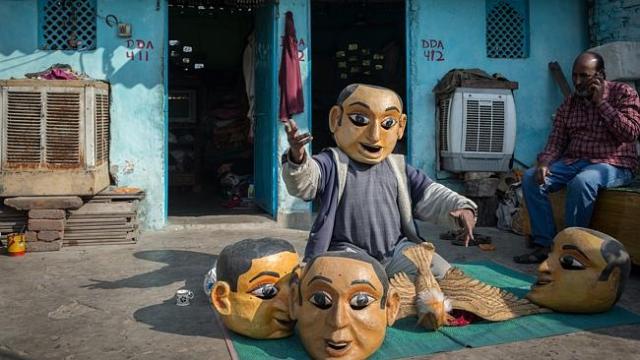
Artist from the Kathputli Colony. From The Australian. See here.
The place is a claustrophobic’s nightmare. Hordes of people —Indians as well as foreigners — are seated on the green carpet waiting for the event to begin. The curious locals, who couldn’t find space inside the small compound, climb atop trees, houses and walls. Never before had their locality seen so many benefactors gathered to watch them perform.
An iron pole, in limbo style, divides the 60 guests (those ‘delegates’ who bought tickets worth Rs.50 each) seated in front and the throng of locality’s residents embellished in colourful dresses, eagerly waiting for their friends and kids to perform in front of the city’s elite. A bunch of SLRs works overdrive, capturing the usual assortment of colours, filled with innocent smiles and genuinely excited faces. A reporter from a prominent news channel urges people to shift so that the cameraman can affix his device at the best possible angle to stream the event — the Kathputli Colony Festival — live. There are two police officers positioned to monitor the crowd, but they are sitting comfortably on chairs specially reserved for them. Unlike other days in the past that have kept them on their toes, today is one of those days when they can relax.
Kathputli Colony is a world-famous but relatively-unknown colony in West Delhi. Only a month ago, in an unprecedented display of courage, the simple people of this colony stood along with life-sized puppets in front of bulldozers that came to shred their shanties to give way to multi-storeyed apartments. Over 3000 families of the colony of puppeteers, magicians, singers, drummers, dancers and acrobats from 13 Indian states have been protesting against the Delhi government’s move to flatten their homes of the past 40 years into a 54-storeyed behemoth with a mall and luxury flats.
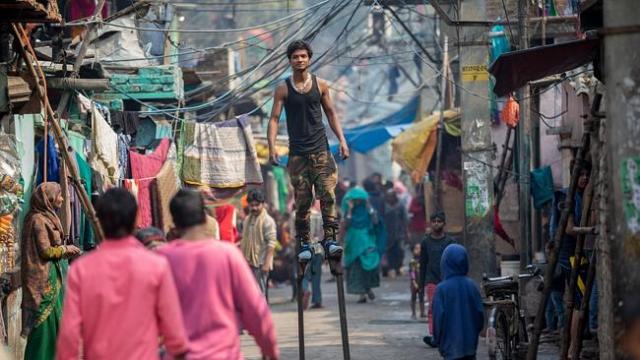
Artist from the Kathputli Colony. From The Australian. See here.
According to a deal between the civic body Delhi Development Authority (DDA) and a private developer Raheja in 2007, the government has taken a community-friendly stance to resettle the families, in which residents are to be shifted to transit camps three kilometres away from their current homes until the promised multi-storey one-bedroom flats are constructed for them. However, the agitated residents complain that they were not consulted. The promised flats are less than 25 sq. m. each, a unit so miniscule for a family of six or more that it will be impossible for them to live in, practise their art and for their kids to study in peace at the same time. Most of the residents who are open to shifting don’t want the flats, but just the land, so that they can build more floors for the next generation, besides using the little roofs to practise their art and store their numerous props without disturbing their neighbours. Consider a drummer whose riyaz goes on for eight hours a day or a puppeteer with a 30 ft tall puppet or an acrobat who requires 15 ft stilts to practise; where will all of them find space in an apartment to do what gives them both pleasure and their livelihood?
On March 20, 2014, the Delhi High Court (HC) disposed the petition filed by the residents and an informal organisation ‘Friends of Kathputli Colony’ against the resettlement plan, asking the petitioners to approach the DDA instead. The HC instructed the land-owning agency to re-consider and take a decision within four weeks, besides urging the DDA to take care of the community’s special needs. Seated right in front of the stage, I am amazed at how the residents have channelled their disappointment into what they are best at, their art.
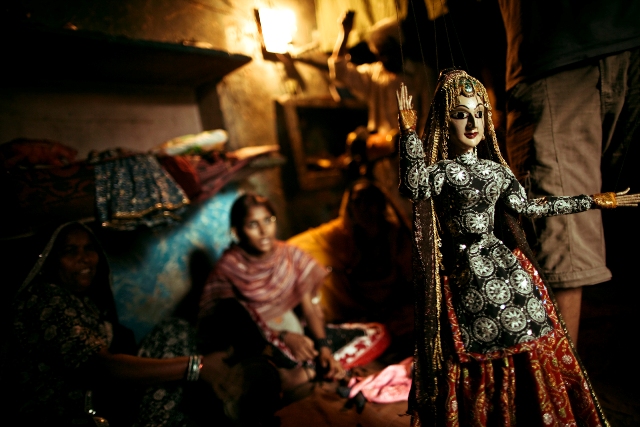
Artist from the Kathputli Colony. Photo by Joshua Cogan.
Bhagwan Das, an old man with a dense moustache and a colourful Rajasthani pugaree — reminiscent of Picture Singh, a memorable character in Rushdie’s Midnight Children — takes on the makeshift stage with his harmonium. At 60, Das is a master qawwal and has performed in more than 60 countries across the globe, even having shared the stage with the virtuoso Nusrat Fateh Ali Khan on one occasion. In the middle of the song, with one hand playing the harmonium, Das says, “Having migrated from Rajasthan, I have been living in the colony for over 40 years now. Every country I have performed in has welcomed me with open arms; it’s unfortunate that my own country is kicking me out of my home,” and breaks into Amir Khusro’s Chaap Tilak. One of the guests around me, a well-dressed and smartphone-endowed young man in a neat checked shirt, urges me to click a picture of him with the performance in the background. ‘It’s my first time in West Delhi,” he says. I oblige.”
….
Read full article here.
More about Harsh Snehanshu here.
See also the trailer of Tomorrow We Disappear, a film produced by Jim Goldblum, Adam Weber, and Joshua Cogan. Tomorrow We Disappear explores the untold and remarkable story of New Delhi’s last magicians’ colony.

